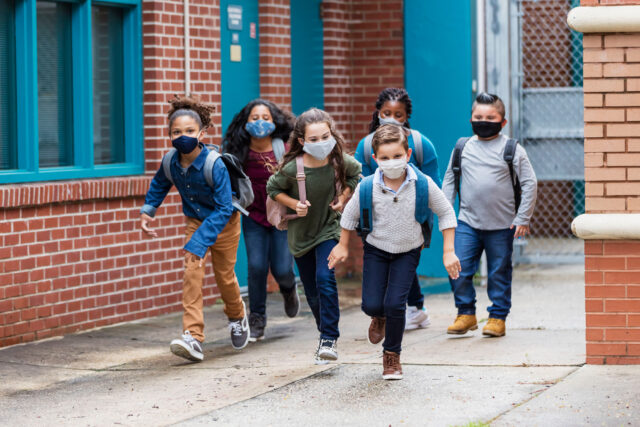Enrollment in California’s public K–12 schools declined nearly 3% between 2019–20 and 2020–21. These declines, which exceeded pre-pandemic forecasts, were largest among low-income students in kindergarten and grade 1. Though district funding from the state will not be affected by enrollment declines in 2020–21 and 2021–22, any shortfalls that persist into 2022–23 would result in lower state funding. More importantly, the magnitude of these declines raises concerns about the educational needs of tens of thousands of students who did not enroll this past year.
For these reasons, it is important to understand how declines varied across districts, which might indicate whether and how these numbers could rebound. District-level data show that enrollment declined in a majority of districts, but most experienced relatively modest changes. In just under half of districts, enrollment declined less than 5%, while another 13% saw increases of less than 5%.
However, enrollment declined between 5% and 15% in more than one-quarter of districts, and nearly 5% of districts saw declines of more than 15%. Kindergarten declines were especially large, with nearly 60% of districts seeing enrollment fall by more than 5%, and nearly a quarter seeing declines of more than 15%.
The causes of these declines are numerous: some parents switched to private schools or homeschooling when faced with virtual options or unsafe school conditions; some students did not participate in remote learning, in many cases due to lack of access to devices or internet; some older students took part time jobs that conflicted with schooling.
However, while we see differences across student race and income, we find few patterns that correspond to district characteristics.
Using data from our survey of school districts in fall 2020, we find little evidence that the magnitude of the decline is related to districts reopening for in-person instruction. Declines were slightly larger in districts operating on a “hybrid” schedule—especially in kindergarten—but this difference disappears when other district characteristics, like size, urban/rural location, and county, are accounted for.
Rural districts had somewhat smaller declines—0.5% vs nearly 3% in city and suburban districts—but in kindergarten, enrollment drops were similarly large across urban and rural districts. Interestingly, declines were more modest in districts with large shares of “high need” (low-income, English Learner, foster-youth, and/or homeless) students and in districts with large shares of English Learner students—but again, the differences are small.
In general, declines tend to be larger in districts that were experiencing enrollment declines before the pandemic, though the pattern is inconsistent: declines were larger in districts with smaller prior declines (1–5%) than in districts with large prior declines (5% or more). However, the kindergarten trend is in the opposite direction: declines are larger in districts that saw increases in kindergarten enrollment before the pandemic.
In short, district-level declines are not highly correlated with reopening status, past declines, or demographics. The pandemic created an unprecedented disruption for California’s school system, and it affected enrollment in districts of all shapes and sizes. Decisions by parents to take their children out of public K–12 schools in 2020–21 were driven by a variety of health, economic, and social factors. We know that concern about contracting COVID-19 remains relatively high among lower-income and Californians of color, and that COVID-19 risk is a major concern among parents nationally.
State and local policymakers will need to pay careful attention to enrollment patterns this fall to understand which students have not returned—and why. The importance of these numbers goes beyond school budgets: many of the children who missed last year may need additional support and services, and children who do not return this fall may fall further behind academically.





